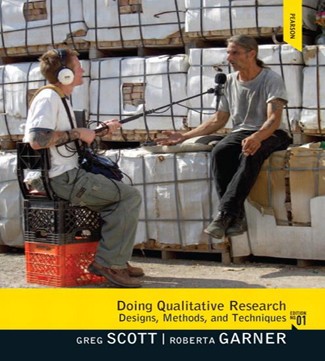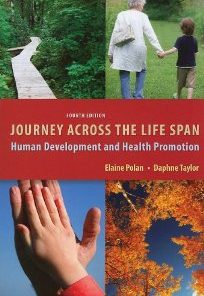Doing Qualitative Research Designs, Methods and Techniques 1st Edition Scott Garner Test Bank
$55.00
Doing Qualitative Research Designs, Methods and Techniques 1st Edition Scott Garner Test Bank
You will receive this product within 24 hours after placing the order
978-0205695935
CHAPTER 1
Fill in the blank
1. Inquiry based on obtaining information through our five senses:
Answer: Empirical inquiry (6)
2. An overall plan for answering research questions:
Answer: Research Design(7)
3. Recognized ways of collection information and producing data, involving various activities:
Answer: Research Methods (7)
4. A specific procedure for producing data, often spelled out as a series of steps that need to be followed for usable results:
Answer: Research Technique (8)
CHAPTER 2
Multiple Choice Questions
1. The “passages” or “arcades” of Paris are:
A. Corridors in the buildings of French government bureaucracies.
B. Shopping malls built in fashionable suburbs at the end of the twentieth century.
C. The “corridors of power” of major European corporations and banks headquartered in the Paris metropolitan region.
D. Enclosed structures with shops and cafes built during the 19th century.
E. Tunnels in the Paris metro in which homeless people live, most of whom are undocumented immigrants called “sans papiers.”
Answer: D (19)
2. The “new qualitative methodology” of the postwar period emphasized:
A. A mix of quantitative and qualitative methods.
B. Field studies.
C. Interviews with political decision-makers and other powerful elites.
D. All of the above.
E. None of the above.
Answer: B (24-26)
3. What did Vidich and Bensman conclude about the small town they studied?
A. It preserved traditional, conservative family values.
B. African Americans were brutally segregated into an area on “the other side of the tracks.”
C. Individuals cared deeply about each other and expressed this solidarity by making many charitable donations.
D. The townspeople failed to recognize that their lives were shaped by political and economic forces beyond the community.
E. The power structure was dominated by a single ethnic and occupational group, the prosperous farmers of German origin.
Answer: D (24)
4. The authors describe Goffman as a “micro-Durkheimian” because:
A. He studied with Emile Durkheim in Paris.
B. He replicated Durkheim’s study of suicide on a small scale in the Great Lakes region.
C. He observed normative regulation as a process that takes place in interaction.
D. He combined quantitative and qualitative methods in small research projects.
E. He replicated Durkheim’s study of religion by carrying out ethnographic research in small hunter-gatherer societies that practiced totemism and animism.
Answer: C (25)
5. Ethnomethodological “breaching experiments” involved:
A. Breaking a rule in a corporation in order to observe organizational responses to deviance.
B. Breaking a law and observing police response.
C. Breaking an unspoken rule for deciphering the meaning of what others say.
D. Deliberately breaking the rules of research ethics to publically demonstrate the unintended consequences of scientific inquiry that is not ethically normative.
E. Encouraging African American students to sit at lunch counters in dime-stores in the pre-civil-rights south of the United States in order to make the public more aware of segregation.
Answer: C (28-29)
6. Three major contributions Max Weber made to qualitative research are:
A. Verstehen, statistical tests, interviewing.
B. Verstehen, historical-comparative methods, ideal types.
C. Observation, ethnography, interviewing.
D. Focus groups, interviewing, ethnography.
E. Historical analysis, data management, verstehen.
Answer: B (15)
7. Which of the following was not a major research method of the Chicago School?
A. Occupational studies.
B. Spatial mapping.
C. Focus groups.
D. Life history analysis.
E. Observations of neighborhoods.
Answer: C (16-17)
8. The Frankfurt Institute—
A. Interviewed Nazis to understand their motives for joining the party.
B. Observed working class life in Frankfurt neighborhoods.
C. Linked media to political fears and fantasies.
D. Studied “small town USA” in Frankfurt, IL.
E. Linked statistical data to observational methods.
Answer: C (19-21)
9. The photographs in Chapter 2 record:
A. Working class neighborhoods in Chicago.
B. Ethnographic fieldwork in Samoa and Papua.
C. Spaces of consumption of 19th century Paris.
D. Housing types in industrial cities of England.
E. “Precarious housing” built by homeless people in the Brickyard near Cicero, IL.
Answer: C (ch.2)
10. William Whyte’s Street Corner Society was about:
A. Life in an African American neighborhood in Chicago.
B. Organized crime in a Jewish neighborhood of Montreal in the 1930s.
C. Puerto Rican and Dominican gangs in New York City.
D. The lives of young Italian American men in Boston.
E. A community of prostitutes and street vendors in D.C.
Answer: D (23)
11. Critical community studies shared:
A. A focus on small towns in New England.
B. An analysis of inequality and ideology in towns and small cities.
C. A defense of “small town values” against encroaching forces.
D. Careful mapping of spatial relations in small communities.
E. A celebration of “Main Street” against “Wall Street.”
Answer: B (23-24)
12. Chapter 2 mentions “a great surge” in qualitative research in the 1950s and 1960s. It is best described as:
A. Micro-sociology and field based studies.
B. Ethnographic research in post-colonial societies.
C. A turn away from verstehen to incorporation of quantitative data in mixed method designs.
D. The first use of computer based technologies for recording and analyzing data.
E. Studies of peasant communities to contribute to counter-insurgency efforts in S. E. Asia.
Answer: A (24-27)
13. Which of the following was not part of the “new qualitative methodology” of the post-war period?
A. Observation of situated action.
B. Field work in natural settings.
C. Emphasis on the social context of interaction.
D. Marxist theoretical foundations.
E. “Breaching experiments” that disrupt interactions.
Answer: D (23)
14. The best statement of the authors’ view of the divide between quantitative and qualitative research is:
A. These approaches are both valid and can be combined in research.
B. Quantitative research is more precise and accurate; qualitative research is only an exploratory first step.
C. Qualitative research reveals more about behavior and motivation than quantitative research.
D. Quantitative research uses too many variables.
E. c and d.
Answer: A (27)
15. The postmodernist critique of previous research is:
A. It was not sufficiently up to date.
B. It failed to use new technologies for recording data.
C. It failed to analyze the way qualitative researchers produce their accounts.
D. It was hypocritical in its stance towards research subjects, claiming they were “friends” and “participants” when they were being exploited.
E. All of the above.
Answer: C (28)
16. When a contemporary qualitative researcher says that some ethnographers “threw themselves into the well of subjectivity” he means that:
A. They wrote primarily about themselves.
B. They became excessively self-scrutinizing and reflexive.
C. They gave up the project of developing an external, objective understanding of cultures.
D. They wrote about how they do ethnography rather than about the cultures they study.
E. All of the above.
Answer: E (28-29)
True-False Questions
1. The word verstehen means to “misrecognize.”
Answer: False (15)
2. Street Corner Society was a study of Salvadorean gangs in Los Angeles.
Answer: False (23)
3. The Chicago School used spatial analysis and spatial mapping.
Answer: True (16)
4. In a breaching experiment, the researcher violates the rules that structure interaction.
Answer: True (26)
5. The New Qualitative Sociology of the post-war period relied heavily on focus group studies.
Answer: False (24-26)
Essay Questions
1. Identify and briefly explain Max Weber’s contributions to qualitative research. (15)
2. The authors say that qualitative research has multiple origins and does not have a “linear history.” Explain the statement. Whole chapter
3. What topics were explored by the scholars of the Frankfurt Institute? How might a contemporary researcher use these ideas? (19-21)
4. What were the major premises of the micro-sociologists and the “new qualitative researchers of the post-war period? (24-26)











Reviews
There are no reviews yet.